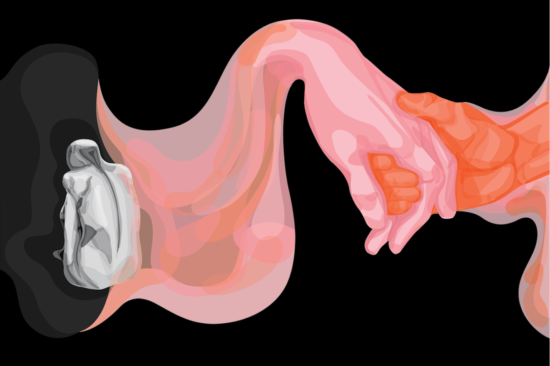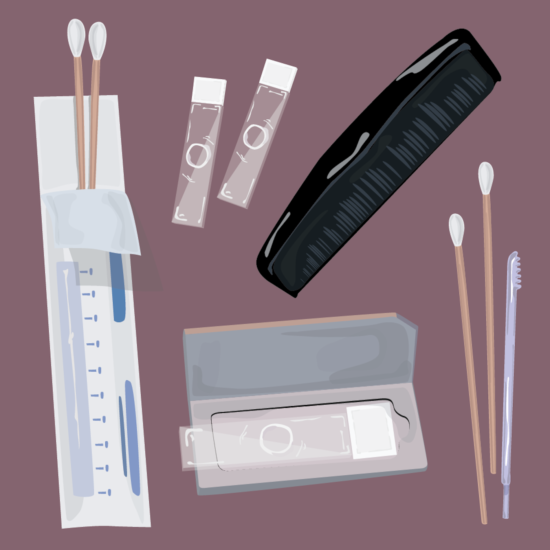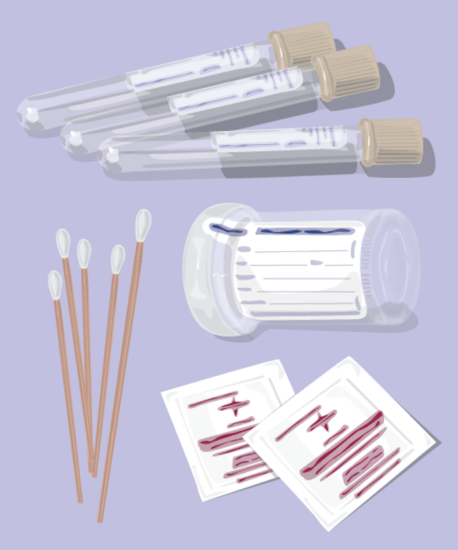Survivors stuck at a crossroads
USC lacks sexual assault resources for students on campus
Photo credit: Asha Rao
K* was a freshman in college when what she thought would be a lighthearted night partying in a fraternity house turned into the night that changed her life. She woke up in bed with the man she believes roofied and sexually assaulted her.
She’d only had one drink that night and knew she couldn’t have consented to any sexual activity. The last thing she remembers was her assailant giving her a drink in his bed. Despite his denial of drugging and assaulting her, her body was telling her something different. Her thoughts were fuzzy and her emotions clouded. One of her friends urged her to go to the Engemann Student Health Center.
The day after the assault, K was informed by the health center that she would have to go to the Santa Monica Rape Treatment Center, which is, at best, a half-hour trek.

“To have to sit in a car alone after being sexually assaulted is a huge burden that can absolutely add to the trauma of being neglected by an institution that’s supposed to help you and be there for you,” said K.
Campus health staff members didn’t mention that they provide transportation, she said. She was left feeling more distraught and alone in an already emotional process. USC was providing transportation through DPS at the time, but K opted not to use it.
“The protocol was confusing. It didn’t say we’ll provide a shuttle (or) we’ll provide a car ride for you–that had not been told to me. I later found that out when an article was published in the Daily Trojan,” said K.
In a new effort launched this fall, USC will provide students who have experienced sexual assault with the option of taking a Lyft from Engemann to Santa Monica. Although not having rape kits and other crucial sexual assault resources on campus is less than ideal for many students, Engemann is aiming to make students feel as comfortable as possible when traveling to Santa Monica.
Dr. Sarah Van Orman, Engemann’s new chief health officer, explains that the Santa Monica Rape Treatment Center is truly the best option for students who have experienced sexual assault: “We’re not sending [students] away to an inferior service, rather we’re sending them to an incredible place.… I’ve been out there. It really is so safe and comfortable.”
The Santa Monica Rape Treatment Center has been nationally recognized for its state-of-the-art resources by LA Times health writer Jane. E. Ellen. The treatment center provides long-term psychotherapy for individuals and will send a cab for any student in Los Angeles that would like a ride to the treatment center.

“The number of students on campus that would need [immediate sexual assault and rape treatment] would not allow us to provide services at their level of expertise,” said Van Orman.
The Santa Monica Rape Treatment Center has necessary resources that are not available to universities such as USC: a certified sexual assault response team available 24/7, advocacy and crisis counselors, expensive medical prescriptions and equipment, and direct connections to law enforcement.
All of the resources the victim needs are available in one place at one time, said Van Orman. Victims don’t have to repeat their stories several times. The trauma of having to retell the story can be triggering for victims.
Van Orman said Santa Monica’s treatment center is unique in that it’s the only center in the Los Angeles that can store rape kits for an indefinite amount of time, giving a survivor the flexibility of deciding when he or she wants to use the kit for evidence.
While the LA+USC Medical Center’s Violence Intervention Program administers rape kits to USC students, it is not popular among students because the program is primarily for minors, said Dianna Linares of Relationship and Sexual Violence Prevention Services (R.S.V.P.). The site is at minimum a 15-minute drive from campus.
Dr. Kristen Zaleski, a professor from the USC School of Social Work, elaborated on the legal obstacles of administering rape kits on campus. “A university system has both the accused and the accuser at the same institution–you have a conflict of interest,” she said. “The Santa Monica Rape Treatment Center has a full-time staff member to educate law enforcement on how to support survivors. They’re all in the room together. There’s a retraumatization to this story. It’s one of the ways they try to advocate for survivors.”

The R.S.V.P. program also offers counseling and advocacy to survivors. R.S.V.P. is available on call 24 hours a day if a student needs support. If a survivor would like, he or she can be accompanied by someone from R.S.V.P. to file a Title IX report, to file a police report or to go to court with the survivor, said R.S.V.P Program Director Brenda Ingram.
Students and activists have complained about the lack of rape kits on campus for years. Survivors and medical professionals say that the mandatory trek to Santa Monica exacerbates the already fragile state of survivors, leaving them with possible short-term and long-term health issues.
“It could trigger high cortisol levels. There are impacts on memory, for example, where people focus more on repeated ruminations of what happened with rape,” said Christina Chen, a neuroscientist and community advocate in Los Angeles. The consequences could leave survivors feeling more depressed or more prone to suicidal ideations, she said.
USC junior Malika Mohan said she feels that there are two main problems: students aren’t educated efficiently about the resources USC offers, and students don’t feel like USC cares about them as humans.
“I don’t think I would even know who to go to at USC, I would probably reach out to friends and family for resources,” she said.
Mohan said her friends have had negative experiences when they tried to get help. She elaborated, “Even if I was to go to USC [for help], I feel like I just don’t trust them to handle it in the appropriate way or for them to handle it without minimizing it or treating it as another transaction.”
Chen said that the lack of action on campus for survivors could cause liability issues in the long run for universities: “I think that if rape survivors are not given the resources that they need, they’re actually opening themselves up to liability. If there’s massive inaction by the administration, and the rape survivor could sue the school for inaction.”
Engemann and R.S.V.P. are doing what they can to make sure students are well-informed about the resources available to them, Ingram said: training RAs on sexual assault prevention and resources, spreading awareness through campus organizations and offering a personal approach by speaking directly to classrooms.
“We need to do a better job explaining why we [send students to Santa Monica[ and how [resources] are available,” Van Orman said.
* NEON has changed the name of the source upon her request
Art by Asha Rao